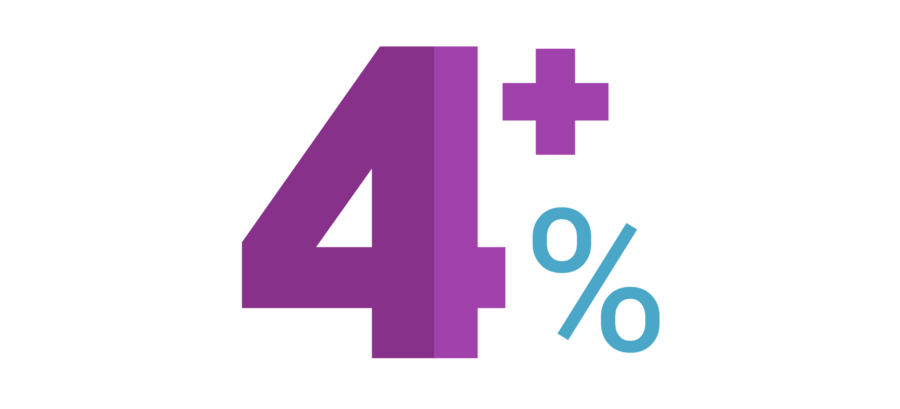
Wells Fargo Names New CEO, Improving Turnaround Prospects
Wells Fargo (WFC) finally appointed a new CEO to lead the bank following a six-month search effort. Charlie Scharf took the job and will start on October 21. The market was pleased, sending shares of Wells Fargo higher by about 4% today.
Before taking the job, Scharf was CEO of Bank of New York Mellon (BK), a firm that Warren Buffett's Berkshire Hathaway has an 8.5% ownership stake in. Buffett upped his stake in BNY Mellon in 2017 and 2018, perhaps a vote of confidence in Scharf since he was named the bank's CEO in July 2017.
The Wall Street Journal notes that Scharf "has experience with turnarounds" and was tasked with overhauling BNY Mellon. Prior to his work at the bank, Scharf was the CEO of Visa (V) and also ran JPMorgan Chase's (JPM) retail financial services division, working closely with CEO Jamie Dimon.
Overall, Scharf seems like as good of a hire as Wells Fargo could have made given the bank's challenging circumstances. Scharf has a lot of experience on the consumer side of the business, appears to have Warren Buffett's stamp of approval, and worked for years alongside banking icon Jamie Dimon.
Given the long, slow turnaround Wells Fargo faces, it probably wasn't an easy job to sell to candidates. Bringing in a new independent leader hopefully marks the beginning of the healing process for the bank's relationship with regulators, as well as its reputation with consumers and businesses.
From a financial perspective, Wells Fargo remains on solid ground. Last quarter the company's credit quality stayed strong, with net charge-offs near historic lows.
More importantly, the bank's period-end loans and deposits actually grew compared with the first quarter and a year ago, suggesting that the worst of the scandal-related effects could be behind the company.
The Federal Reserve also did not object to Wells Fargo's 2019 capital plan, allowing the firm to raise its dividend by 13.3% and repurchase more shares.
Given the bank's health, stability, and minimal exposure to riskier businesses such as investment banking and trading, Scharf seems very unlikely to implement a sweeping restructuring plan which could materially alter Wells Fargo's capital allocation plans.
The bank's dividend continues to look solid, but shareholders will need to remain patient. Turnarounds, especially at a company this large and complex, don't happen overnight and can experience setbacks along the way.
We plan to continue holding our shares of Wells Fargo in our Top 20 Dividend Stocks and Conservative Retirees portfolios. Our timing was unfortunate having acquired our positions in late 2015 and early 2016, less than a year before the fake-account scandal came to light.
However, there's reason to believe that better times are ahead for the bank, and Scharf seems like the right leader for the job. With Wells Fargo remaining in great financial shape and paying a safe 4% dividend yield, we are content continuing to give the turnaround more time.
Before taking the job, Scharf was CEO of Bank of New York Mellon (BK), a firm that Warren Buffett's Berkshire Hathaway has an 8.5% ownership stake in. Buffett upped his stake in BNY Mellon in 2017 and 2018, perhaps a vote of confidence in Scharf since he was named the bank's CEO in July 2017.
The Wall Street Journal notes that Scharf "has experience with turnarounds" and was tasked with overhauling BNY Mellon. Prior to his work at the bank, Scharf was the CEO of Visa (V) and also ran JPMorgan Chase's (JPM) retail financial services division, working closely with CEO Jamie Dimon.
Overall, Scharf seems like as good of a hire as Wells Fargo could have made given the bank's challenging circumstances. Scharf has a lot of experience on the consumer side of the business, appears to have Warren Buffett's stamp of approval, and worked for years alongside banking icon Jamie Dimon.
Given the long, slow turnaround Wells Fargo faces, it probably wasn't an easy job to sell to candidates. Bringing in a new independent leader hopefully marks the beginning of the healing process for the bank's relationship with regulators, as well as its reputation with consumers and businesses.
From a financial perspective, Wells Fargo remains on solid ground. Last quarter the company's credit quality stayed strong, with net charge-offs near historic lows.
More importantly, the bank's period-end loans and deposits actually grew compared with the first quarter and a year ago, suggesting that the worst of the scandal-related effects could be behind the company.
The Federal Reserve also did not object to Wells Fargo's 2019 capital plan, allowing the firm to raise its dividend by 13.3% and repurchase more shares.
Given the bank's health, stability, and minimal exposure to riskier businesses such as investment banking and trading, Scharf seems very unlikely to implement a sweeping restructuring plan which could materially alter Wells Fargo's capital allocation plans.
The bank's dividend continues to look solid, but shareholders will need to remain patient. Turnarounds, especially at a company this large and complex, don't happen overnight and can experience setbacks along the way.
We plan to continue holding our shares of Wells Fargo in our Top 20 Dividend Stocks and Conservative Retirees portfolios. Our timing was unfortunate having acquired our positions in late 2015 and early 2016, less than a year before the fake-account scandal came to light.
However, there's reason to believe that better times are ahead for the bank, and Scharf seems like the right leader for the job. With Wells Fargo remaining in great financial shape and paying a safe 4% dividend yield, we are content continuing to give the turnaround more time.



